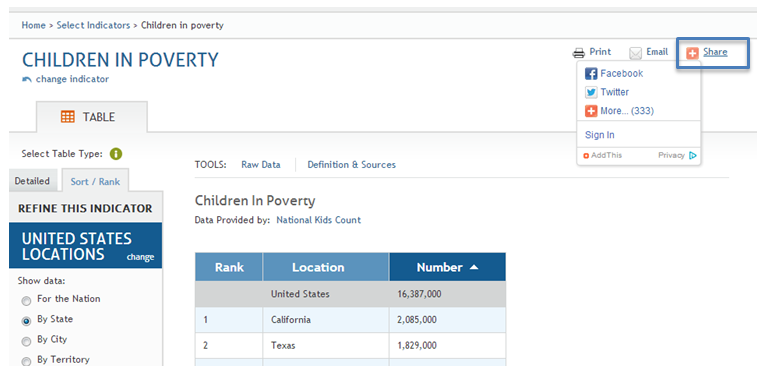FAQS
Looking for help using the Data Center? See our help page.

I can’t find the community-level data (county, school district) I need. What should I do?

When looking at the list of indicators, two appear to be identical. What is the difference?


How do I rank states, counties or other geographies?


How does my state rank overall on child well-being?


The Overall Rank for my state is informative, but it masks how we are performing in different areas. Is it possible to rank my state in different areas?

What happened to the 10 key indicators tracked by the KIDS COUNT Data Book?
The diversification of the indicators and the incorporation of domains provide a more complete picture of how children are faring overall and in key areas that affect their well-being.

How do I share data on social networking sites, blogs and other online venues?


Can I access data on the Data Center through my smartphone?

How do I cite KIDS COUNT data?
If your question was not answered, go to Contact us and enter your question. We'll get back to you as soon as possible.
